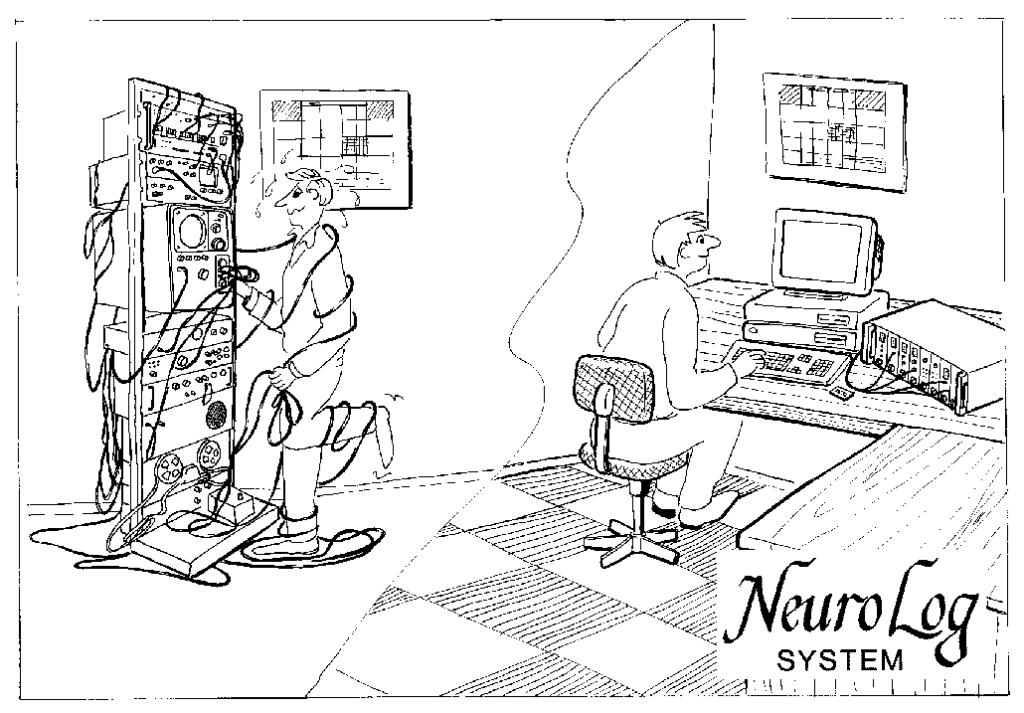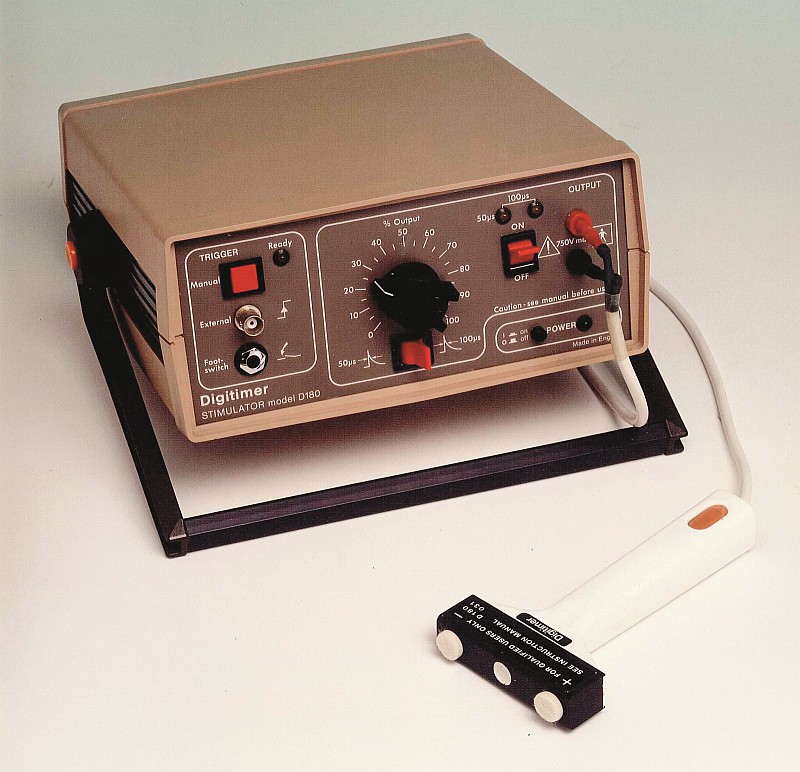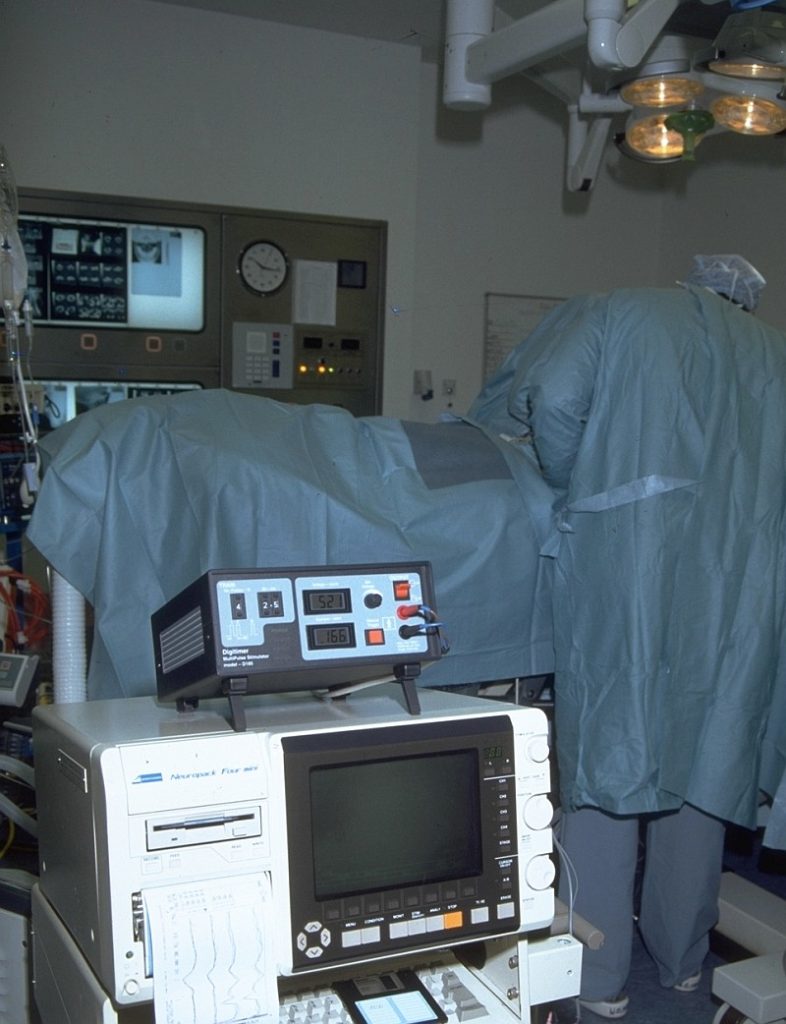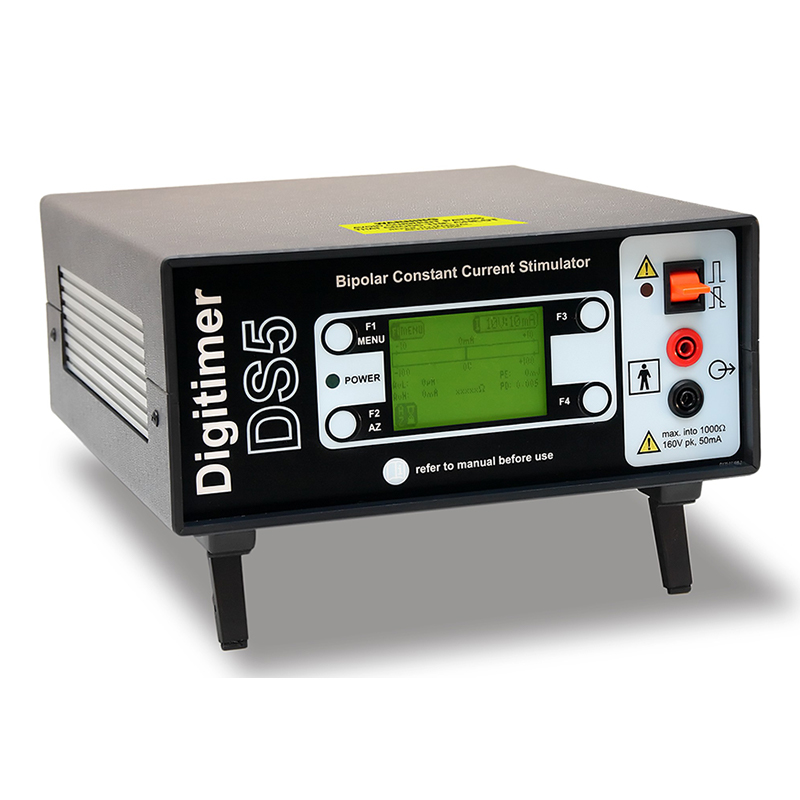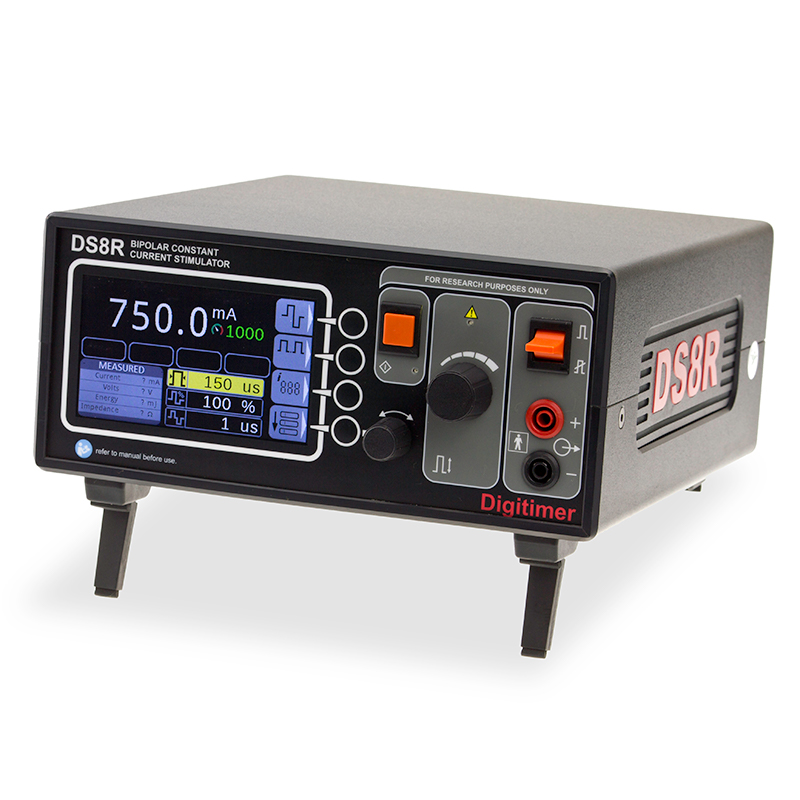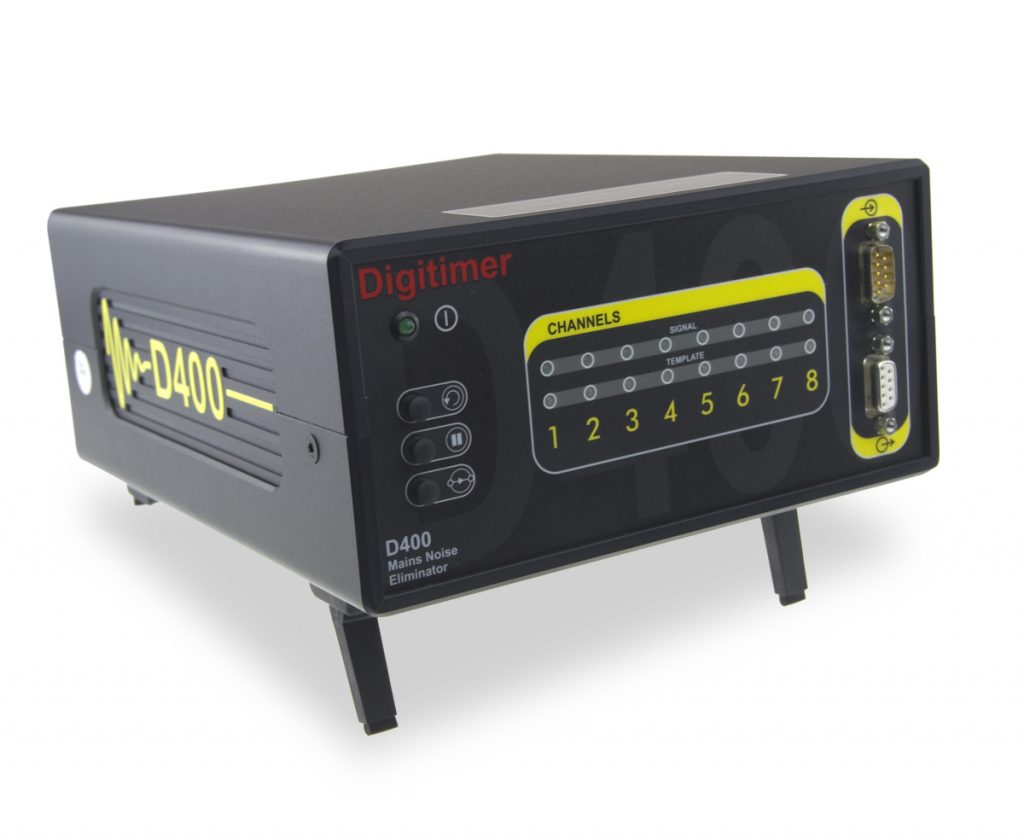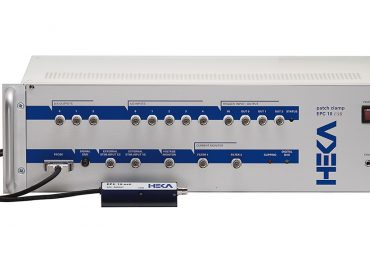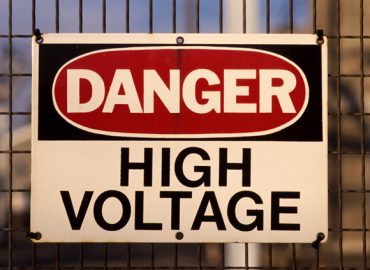1972 to 2022
Celebrating 50 Years of Innovation at Digitimer
Introduction
Founded in September 1972, Digitimer Limited has recently reached the incredible milestone of 50 years in the life science and medical device manufacturing business. Everyone at Digitimer is incredibly proud of this significant achievement, which is a testament to the innovative products Digitimer has developed and supplied for over 50 years, our long-standing partnerships with global life science companies and of course, our fantastic customers.
For those who don’t already know, Digitimer took its name from the first “Digitimer” (DIGItal Time Interval Marker and Event Release), which was designed by the late HB (Bert) Morton at The National Hospital, London in the early 1960’s. This product was originally manufactured and sold worldwide by Devices Limited, which at that time was the only British company manufacturing implantable cardiac pacemakers. Their pacemaker technology led to Devices being acquired by Johnson & Johnson and in 1972, Digitimer Limited was formed to further develop and manufacture electronic instruments for medical research and clinical investigations.
Today, Digitimer continues to design and manufacture innovative medical devices and life science research instrumentation, which is utilised by the most prestigious universities and hospitals in the world. Not only have our products helped further our understanding of basic physiology, but also improved diagnostic testing and enhanced intraoperative monitoring of patients undergoing surgical procedures. In this article, we take a closer look at some of the most significant products Digitimer has launched in our five decades within this industry.
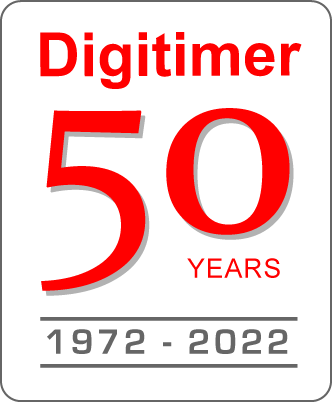
1970’s – Digital Timers and Modular Electrophysiology
The D4030 was one of the first products manufactured by Digitimer Ltd and was developed from the Devices Ltd. range of “Digitimers”. In the years preceding the ubiquitous availability of personal computers and associated digital data acquisition systems, the D4030 and similar devices provided a means to precisely control the triggering of instruments including electrical stimulators. Incredibly, some fifty years later, the D4030 is still in use in several labs and has been cited in several 2022 research papers. We can even supply a copy of the operator’s manual to those who need it!
Another significant product launched in the early 1970’s was the NeuroLog System. Originally designed by Dr Eugene Merrill to make recordings from single brain cells, the NeuroLog System is instantly recognised in laboratories worldwide and a protoype NeuroLog System is possessed by the UK’s Science Museum.
This modular instrument provided researchers with a compact rack-mountable instrument that incorporated amplifiers, timers, signal conditioners and electrical stimulation capabilities. One important feature of the NeuroLog System was the ability to route signals through the edge connectors of the modules without the need for cables. This capability removed the “rats nest” of cables that could afflict electrophysiology rigs assembled from multiple standalone instruments and is emphasised in the cartoon opposite. To this day, the NeuroLog System continues to provide life science researchers with a compact modular system for electrophysiological research. New modules continue to be developed and all are designed to be fully backwards and forwards compatible – not something many companies strive to do!
1980’s – First Steps in High Voltage Cortical Stimulation
Non-invasive transcranial stimulation of the human motor cortex and spinal cord was made possible with the development of the D180 High Voltage Cortical Stimulator. In order to reduce the discomfort felt by the patient, the D180 employed very brief, high voltage pulses which were adequate to excite structures of interest, without significant activation of pain fibres. The D180 was the forerunner of the D185 MultiPulse Cortical Stimulator which was developed in the late 1990’s for intraoperative spinal cord monitoring and is further discussed below.
Originally launched in 1988, DS7 High Voltage Constant Current Stimulator has been continuously updated over the last 30+ years and is now available in several versions. Intended for general-purpose nerve and muscle stimulation, the DS7A and DS7AH are approved for human use within Europe and are also FDA-cleared for marketing in the USA. They are used in a variety of applications where human muscles or nerves need to be stimulated with a high voltage, constant current pulse. DS7 stimulators are found in clinical neurophysiology clinics, sports physiology labs and are even used to deliver pain in psychological testing or nociception research. In addition to the medically approved DS7A and DS7AH, we now manufacture a research version (DS7R) of the DS7AH, which offers greater pulse duration flexibility.
1990’s – Refinements in Cortical Stimulation for Intraoperative Monitoring
The 1990’s saw the arrival of the D185 MultiPulse Cortical Stimulator, which is used worldwide as an effective tool for intraoperative monitoring (IOM) of the descending motor pathways within the spinal cord. Developed in collaboration with several renowned clinical neurophysiologists and surgeons, the D185 MultiPulse Cortical Electrical Stimulator remains the ONLY standalone surgical stimulator with United States FDA clearance for this technique.
The D185 MultiPulse Cortical Electrical Stimulator allows transcranial motor evoked potentials (MEPs) to be elicited via stimulation through the scalp and monitored in surgical procedures such as scoliosis correction, spinal tumour resection and thoraco-abdominal aortic aneurysm (TAAA) repair. The 1000V power source means that MEPs can even be evoked in patients with pre-existing neuropathologies.
The D185 MultiPulse Cortical Electrical Stimulator is also useful for peripheral nerve stimulation. Although the D185 was designed for transcranial cortical stimulation during intraoperative monitoring, the brief high voltage output also makes it suitable for use as a spinal root stimulator during differential diagnosis of peripheral nerve disorders, such as multifocal motor neuropathy and motor neuron disease. The high voltage allows effectively stimulation of deep nerve roots as they exit the spinal column, while the very short pulse duration minimizes patient discomfort.
2000’s – The EU Medical Device Directive, Urodynamics & Threshold Tracking Stimulation
In 2003 Digitimer launched the D360 8-channel Patient Amplifier, intended for electromyography, electroencephalography and evoked potential recordings in a research or clinical environment. The D360 was the first medically certified Digitimer amplifier to be developed since the introduction of new European laws relating to medical devices (MDD).
In March 2006 Digitimer acquired some products, brand name, distributor rights and key personnel from Lectromed (UK) Ltd. Lectromed had been a major player in the field of Urodynamic Investigations for many years and Digitimer’s acquisition represented a diversification and expansion into a complementary field of medical investigation devices and associated accessories. To this day, we continue to offer an extensive range of pessaries and consumable items for urodynamic clinics.
After a significant period in the design and development phases, Digitimer released the DS5 Biphasic Constant Current Stimulator in 2007. This eagerly anticipated electrical stimulator was specifically designed to facilitate investigations of nerve excitability using semi-automated threshold tracking methods developed by Prof. Hugh Bostock (University College London). The DS5 operates as a voltage-to-current amplifier, which means a biphasic analogue voltage signal may be used to generate an isolated stimulus which is proportional to this input. Although the DS5 was developed for threshold tracking studies of nerve and muscle excitability, it has also found a role in many applications that require a computer-controlled stimulus or a non-rectangular pulse shape, such as pain research and galvanic vestibular stimulation.
2010’s – The Evolution of the DS8R Stimulator
Between 2000 and 2010, it became increasingly clear that there was a growing demand for a high-voltage nerve/muscle stimulator, equivalent to the DS7A/AH, which also provided features such as enhanced external control capabilities and an option for biphasic output. To some extent, the DS5 met this need, but with a limited output voltage/current and no direct control from a PC, our developers started to work on a next-generation stimulator.
Following a successful bid for prototype development funding from InnovateUK, Digitimer embarked on one of the most demanding projects we have ever undertaken. In 2017, the first pre-production prototype stimulators were despatched to global evaluation sites and within a year, we had commenced manufacturing of the new DS8R High Voltage Constant Current Research Stimulator.
The DS8R has been available for a little over 4 years and has proved incredibly popular, not only for those interested in automating stimulus protocols but also among researchers interested in examining the role of high-frequency transcutaneous spinal cord stimulation in the rehabilitation of those with spinal cord injuries. For these particular users, we provide a modified DS8R firmware that allows the output frequency of the DS8R to be increased from 1kHz to 10kHz.
2020’s – Keeping the Noise Down
The Covid pandemic certainly impacted our ability to develop new products at pace, but despite the restrictions we faced, the last few years have seen the launch of several new devices. As a distributor of the Quest Scientific Hum Bug Noise Eliminator, we had previously identified a requirement for a multi-channel equivalent, specifically targeted at researchers who needed to remove mains interference from multi-channel recordings. In 2020, the two and four channel versions of the new D400 Noise Eliminator were launched and these were soon followed by an eight-channel version.
In the last 12 months, we also launched the new D360R-4 4-channel isolated research amplifier, based on our medically approved, 8-channel D360. This new amplifier represents a more cost-effective solution for researchers interested in amplifying EMG or similar AC-coupled signals in multiples of 4 channels. The D360R-4 has the same maximum gain and flexible filter setting as the original D360 and is fully compatible with any DAQ system that accepts analogue signal inputs, but is ideally suited to use with the Cambridge Electronic Design 1401’s.
In 2021 and in recognition of our long partnership with Quest Scientific, we were given the opportunity to take on the Hum Bug as a Digitimer product. Earlier this year, the first Digitimer re-designed and manufactured Hum Bugs started shipping to customers, providing a seamless transition in the supply of this ever-popular instrument.
As Digitimer embarks on its second half-century, our product development pipeline remains full and we look forward to introducing more new and exciting products to existing and new Digitimer customers over the coming years.
